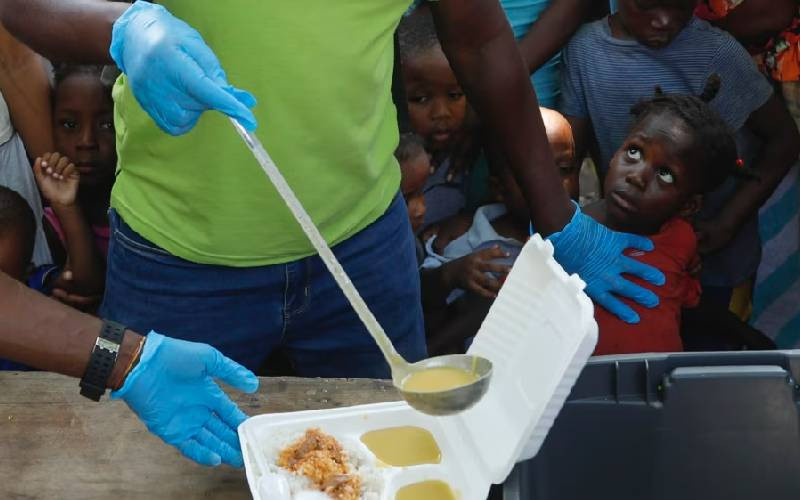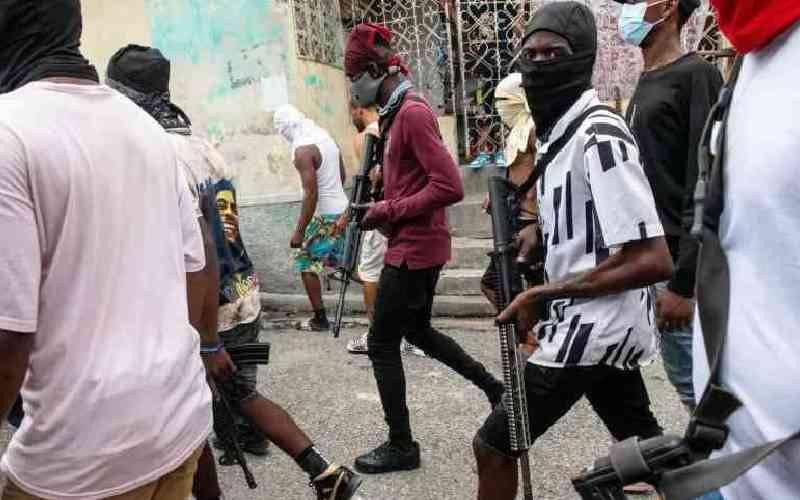They begin as community policing groups and later mutate into criminal gangs running extortion rings and spreading terror. But for every gang formed, a counter gang springs up even as the proscribed groups change names to evade justice, writes JOHN OYWA
They are masters of impunity.
They run shadowy extortion rings and can kill their victims at the slightest provocation.
When they are not shedding blood to keep politicians in power, they are peddling drugs, smuggling firearms across the country’s porous borders or terrorising the mama mbogas for illegal taxes.
Sometimes they disappear from the public radar to escape security crackdown only to re-emerge with deadly vengeance.
From Mombasa to Nairobi, through Central Kenya to Nyanza and Rift Valley, Kenya’s criminal gangs have outwitted the police and are already devolving their activities to the counties.
A year after they were proscribed by the Government, many of the gangs are back in operation, amid fears that the number is rising some having changed their names.
A high level security meeting held in Mombasa last week, heard how the gangs start as friendly vigilantes protecting small scale traders against criminals, then graduate into hardcore armed gangs and militia.
Nairobi PC Njoroge Ndirangu and his Central counterpart Kiplimo Rugut admit the gangs engage in underground activities such as selling illegally connected water and electricity and controlling public transport.
Statistics from the Government show that up to 2.5 million Kenyan youth have been recruited into these gangs in the recent past.
Security experts now say that although the Government outlawed 33 armed gangs and militias, there are more than 100 such groups in the country.
Regaining ground
Every town has several organised gangs, executing political assignment, peddling drugs or running extortion rings.
Criminal groups such as the Sabaot Lands Defence Force (SDLF) that killed hundreds of villagers in the Mt Elgon area before the army out gunned them are slowly returning to the battlefield.
Remnants of SLDF have re-emerged in Mt Elgon and have also been spotted in Naivasha while the Mungiki, believed to be Kenya’s deadliest gang, is fast mutating and quietly spreading its tentacles across the country.
Stay informed. Subscribe to our newsletter
The Mombasa Republican Council, which has been giving security officials sleepless nights, is said to have changed its name to Nyuki after it was proscribed while Baghdad Boys from Kisumu is only in a sleeping state and could be plotting a comeback.
In a recent study commissioned by the United Nations Development Programme (UNDP), researchers Mutahi Ngunyi, Musambayi Katumanga and Philip Gathungu link the many gangs to the 2007-2008 post-election violence.
They say in their report titled From Monopoly to Oligopoly of Violence that areas that were hardest hit by the violence also had the highest concentration of organised criminal gangs.
In Naivasha, post-election violence was concentrated along the Nairobi-Nakuru highway and in Viwandani where criminal gangs have their hideout.
"The Mungiki gang operating here attacks their victims and retreats into caves which are no go zones for the police. Operations here are controlled by one old man who doubles as a drug lord," said Gathungu. He says it was around the Karagita area where Mungiki gangs were seen flushing travellers out of matatus and hacking them to death at the height of the post-election violence.
Hideouts
In Eldoret, criminal gangs operated around Langas and Huruma areas where there were more post-election violence attacks and evictions.
In Kisumu, destruction of property mainly occurred in Kondele, the headquarters of the Baghdad Boys gang.
The report also says that criminal gangs in Kibera slums operated along the railway line where they kept on uprooting the railway line during the post-election violence
The researchers warn that the many vigilantes mushrooming across the country could turn into full-blown militia if their activities were not nipped in the bud.
"The danger with the vigilantes is that they have the potential to mutate into more dangerous groups in the name of community protection. This is how Mungiki was born," says the report.
Security experts say the militia formations start as services providers for the community, but as opportunities increase, they metamorphosise into hardcore groups.
The report says the gangs were involved in ethnic and political violence, money laundering, vigilante activities, terrorism and extortions.
It names most dominant militia in Kenya as Mungiki, the Taliban and the Mombasa Republican Council.
Security experts are warning that the Mombasa Republican Council is quickly turning into a movement with a goal of ‘liberating’ the coastal people from the perceived dominance of the upcountry immigrants.
A mapping of the hotspots shows that the gang members have outnumbered the police.
"For every one armed policeman, there are eight armed gang members. What is worse, the police are confined in camps, a fact that makes their mobility difficult," says the report.
It has also emerged that gangs such as Mungiki, Mombasa Republican Council, Taliban, Sungu Sungu and the SDLF have formed cells outside their former areas of operation.
They spread their activities to major towns to protect specific business, extort money and serve political interests.
But gangs in Kisumu are classified as soft core and flamboyant with colourful names.
They include Baghdad Boys, Kosovo, Somali Base, Taliban, Darfur Boys, Nyalenda Hood boys, Ghetto people, Langata Barracks and the Vuvuzelas, among others.
The report says that unlike Nairobi, Nakuru and Mombasa, Kisumu does not have predatory organised gangs and that those present were mainly involved in political mobilisation.
Counter force
It has also emerged that wherever a gang emerges in a location, there is a counter force formed by a rival gang.
"In the case of Mungiki in Nairobi and Eldoret, the counter force is Taliban. Statistics show high concentration of Taliban in Eldoret and Nairobi, maybe because of the presence of Mungiki there," says the report.
The Baghdad Boys is also found in Eldoret and Huruma in Nairobi, according to the study.
But even more worrying are reports that some chiefs and their assistants, especially in Nairobi, were using members of proscribed gangs to police their areas of jurisdiction.
In Nairobi’s Kibera slums, for example, a gang calling itself The Twelve Disciples’ is enjoying an unholy alliance with some provincial administrators.
Independent investigations by The Underworld show that prisons provide a fertile ground for recruitment of gang members.
Jailed criminals recruit young inmates serving short sentences into these gangs. Surveys show that the number of Mungiki adherents shoot up every time many of them are arrested and remanded.
"The more these Mungiki suspects stay in prison remands, the more members they recruit," says a senior government official who asked not to be named.
Senior government officials say the higher the number of gang members in prisons, the bigger the number of new recruits they get from the correctional facilities.
In the Kibera slums, gangs normally use crude weapons to attack their targets. If this fails, they turn to machetes. The gangs also have ‘support battalions’ who normally use guns.
Last week, top government officials owned up, saying the fight against armed gangs have not yielded desired results and are now calling for a fresh multi-faceted strategy.
Police Commissioner Mathews Iteere, the Administration Police Commandant Kinuthia Mbugua, Internal security PS Francis Kimemia and eight provincial commissioners told a high level security meeting in Mombasa that armed groups and militia remained a big threat to the population.
 The Standard Group Plc is a
multi-media organization with investments in media platforms spanning newspaper
print operations, television, radio broadcasting, digital and online services. The
Standard Group is recognized as a leading multi-media house in Kenya with a key
influence in matters of national and international interest.
The Standard Group Plc is a
multi-media organization with investments in media platforms spanning newspaper
print operations, television, radio broadcasting, digital and online services. The
Standard Group is recognized as a leading multi-media house in Kenya with a key
influence in matters of national and international interest.
 The Standard Group Plc is a
multi-media organization with investments in media platforms spanning newspaper
print operations, television, radio broadcasting, digital and online services. The
Standard Group is recognized as a leading multi-media house in Kenya with a key
influence in matters of national and international interest.
The Standard Group Plc is a
multi-media organization with investments in media platforms spanning newspaper
print operations, television, radio broadcasting, digital and online services. The
Standard Group is recognized as a leading multi-media house in Kenya with a key
influence in matters of national and international interest.










